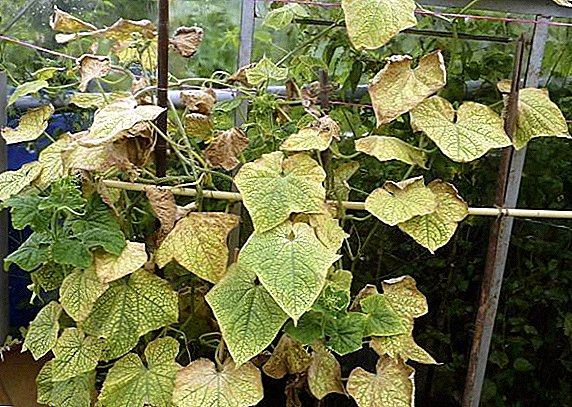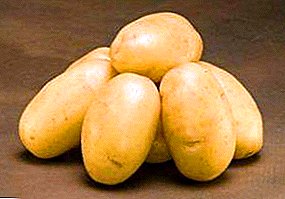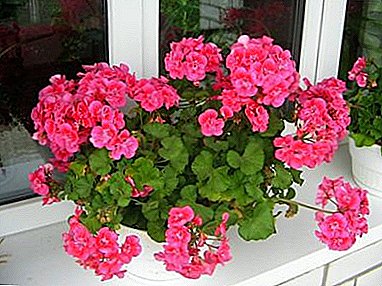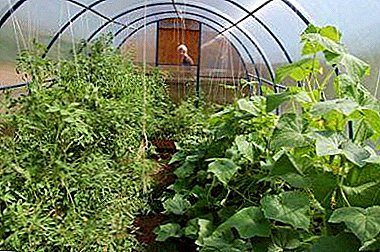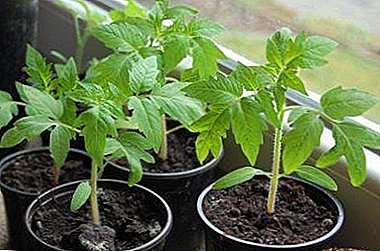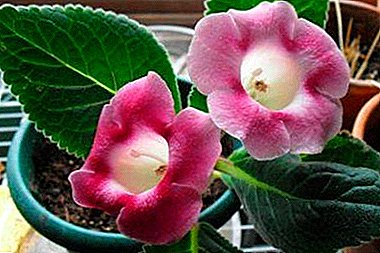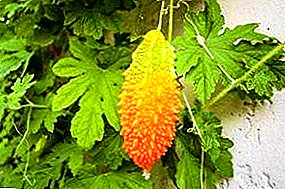
Today we look at one very exotic plant.
It has many useful properties, an unusual taste, and it is called "Chinese bitter gourd".
Most of it is known under the mysterious name "Momordika".
Briefly about the plant
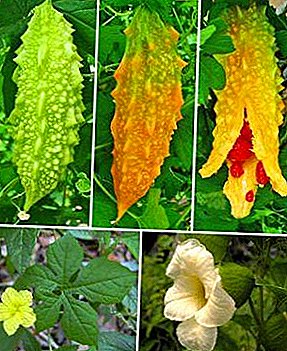 Momordica, in fact, is the common name for a large number of plants - annual and perennial vines.
Momordica, in fact, is the common name for a large number of plants - annual and perennial vines.
All of them are very different and I would like to talk about each type in more detail, but now we are only interested in one representative of this family.
This is "Momordika Kokhinkhinsky", widespread in the subtropical zone, for example in Indonesia and China.
Many gardeners grow this plant only because of its unusual appearance. And, they can be understood.
Momordica is a long, up to two meters, thin vines, decorated with large, beautiful leaves.
During flowering, on vines bloom bright yellow flowers on a thin stalk, which have a very pleasant and delicate aroma. But, much more, its fruits are valued by lovers of the exotic.
Soon after the pollination of flowers, a green, as if covered with warts, ovary is formed, which begins to grow rapidly. Having reached about ten centimeters in length (and it happens that more), the fruit begins to fill with yellow-orange color. Overheating, the fruit cracks in the lower part and soon forms three fleshy, twisted petals, studded with large, red-brown seeds.
But, this vegetable is grown not only because of its appearance, but also because it is extremely tasty! Usually, the fruits are harvested slightly immature and soaked for three to four hours in well-salted water.
This is done in order to remove the bitterness to which Momordica owes its name - "Bitter Gourd". After soaking, the fruit (resembling a pumpkin in taste) is usually fried.
Or stew, along with flowers, young leaves and shoots. Some prefer to preserve fruits to feast on them in the winter.
How is momordica grown?
The easiest way to grow this vegetable is with the help of seeds. Just soak them in a weak solution of potassium permanganate, about a day before disembarking.
 After that, put them in a box or peat pots filled with fertile mixture.
After that, put them in a box or peat pots filled with fertile mixture.
Planting depth is about one and a half centimeters. Experienced gardeners are advised to put them on the edge, then sprinkle with earth, pour with warm water and cover with polyethylene.
You can forget about them for a couple of days, after which you just need to keep the soil moist, waiting for the frosts to pass.
As soon as it became warm on the street, we transplant the sprouts in a greenhouse and do not forget to water it well, and spray it with warm water at night. Also, the soil should be fertilized so that the plant does not wither on poor ground.
There are two proven options for feeding:
- chicken litter solution, in the ratio of "one part of the litter to twelve liters of water";
- mullein solution, with a ratio of "one to ten," respectively.
The important point is momordica, it is a thorny plant, so work with it, wearing gloves and long-sleeved clothes!
A more complicated (but not much) way is planting cuttings of an already adult plant. For this, the appendix (or, as it is also called, “stepchild”) is cut off and put into warm water. In a couple of weeks he will take root, and after another month it can be planted in the ground.
In general, the removal of side shoots is very important if you want to harvest a good crop. In order for the plant to produce as many fruits as possible, it is necessary to remove all the processes on its lower part, that is, up to the mark of fifty centimeters.
Usually leave three main stalk, not more. All shoots that appear above are cut off after the first fruit is tied.
Useful properties of "bitter gourd"
 Of course, all the properties of this vegetable have not yet been studied, but there are already many reasons to include bitter gourd in your diet.
Of course, all the properties of this vegetable have not yet been studied, but there are already many reasons to include bitter gourd in your diet.
It is saturated with nutrients. Studies have shown that it contains two times more beta-carotene, calcium and potassium than can be found in broccoli, spinach and banana, respectively.
Leaves and stems are not only tasty stewed, but also a good anthelmintic agent. If you make an infusion of them, it will help with colds, as well as type 2 diabetes.
Seeds are useful as a diuretic. Also, there is evidence that they have a beneficial effect in stomach ulcers, and indeed, as an anti-inflammatory agent.
Perhaps in the future, this plant will help in the treatment of malaria, HIV and cancer, but research in these areas has just begun.
Contraindications
Unfortunately, not everyone can eat this vegetable.
First, you still should not eat it, if you have an open stomach ulcer, there is a chance that it will aggravate from bitter gourd.
Secondly, it is better not to give seeds to children and pregnant women. A child's body may not endure such a test, and pregnant women increase the risk of miscarriage. This is rare, but it happens.
For the rest, the bitter Chinese pumpkin is useful. However, it can always be landed on the site just for beauty, then the choice is yours.



